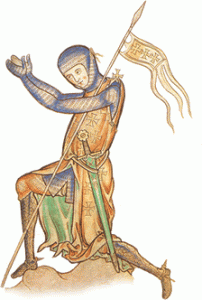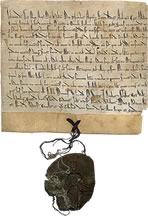Magna Carta 1215: London’s Temple Church, and Rule of Law
The Temple Church, London Mother Church of the Common Law
Welcome to this part of our site. We are delighted to be celebrating Magna Carta and its legacy here at the Temple, at the heart of legal and constitutional London. I hope that you will be able to visit us before long, and to see this special and historic place for yourself. We have a specialMagna Carta Exhibition in the Round Church, which (we are glad to see!) our many visitors are clearly enjoying.
We are an active Church in the Church of England, and have one of the finest choirs in England; the choir is broadcast regularly on BBC Radio 3 and Classic FM. We hope you will, if you are due to be in London, be able to join us for a choral service here.
We have been closely linked to Magna Carta and its legacy ever since 1214.
- The Temple was King John’s London headquarters, 1214-5. From here he issued two vital preliminary charters, and here in January 1215 the barons confronted him for the first time with the demand that he subject himself to the rule of a charter.
- The hero of Magna Carta was William Marshal, Earl of Pembroke. He mediated between John and the barons, secured the agreement embodied in Magna Carta and was one of the King’s advisors at Runnymede. When John died the Marshal became guardian of the boy-king Henry III and of the kingdom. He re-issued Magna Carta under his own seal in 1216 and 1217, and so ensured its survival. He was buried in the Temple’s Round Church, where his effigy still lies.
- William’s heir, William Marshal the second Earl, was one of the Surety Barons at Runnymede. He then fought alongside his father at the Battle of Lincoln to save the kingdom for Henry III. He married Henry’s sister. He too was buried in the Round, next to his father, where his effigy still lies.
- The Temple’s Chancel was built, 1135-40, to be the funerary chapel of Henry III and his queen. With Henry’s re-issue of Magna Carta in 1225 the Charter was secure.
- The Temple’s Common Law lawyers led the resistance in the 17th century against the Stuart kings’ absolutism. The lawyers – such as Coke and Selden – repeatedly invoked Magna Carta.
- In the same decades the Temple’s lawyers were drawing up the constitutions for the early American colonies. Links with the USA have been strong ever since. Five members of Inner / Middle Temple signed the Declaration of Independence, seven the Constitution. The American Ambassador to London and US Chief Justice Roberts are both Benchers of Middle Temple.
- The Temple has since 1608 been the collegiate Church of the legal colleges Inner and Middle Temple, and stands at the heart of this unforgettably beautiful and historic part of London.
With best wishes from the Temple Church
Robin Griffith-Jones, DLitt,
The Reverend and Valiant Master of the Temple
Click here to download the book: Magna Carta 1215-2015: London’s Temple and The Road to the Rule of Law.
HISTORY OF THE MAGNA CARTA
800 years of liberty, click to see timeline
Magna Carta was not the first time that a monarch had agreed in writing to safeguard the rights, privileges and liberties of the clergy and the nobles – to place limits on the power of the crown.

Henry I set a precedent on his accession to the throne in 1100, thirty-four years after the Norman Conquest. He issued a royal proclamation – the Coronation Charter, designed to atone for the past abuses of his predecessor William Rufus. The ink was barely dry in the Domesday Book from fifteen years earlier, so it was vital to ensure a consistent income stream from the nobility for the business of kingship, at least for the duration of his reign, which lasted thirty-five years.
Yet even though the Coronation Charter is acknowledged as the precursor to Magna Carta, it was conveniently forgotten and / or ignored by four Kings, and almost one Queen, over the course of the next century.
It was only after Archbishop of Canterbury, Stephen Langton, also in long term dispute with King John, dusted off the 113 year old proclamation of Henry I and showed it to the Barons, that the idea of a new and improved charter – a Great Charter took hold.
Magna Carta, despite the pennant flying theatricality of the showdown at Runnymede in June, 1215, suffered a similar, yet more rapid demise than the Coronation Charter. By August the same year, Pope Innocent III had annulled Magna Carta, declaring it illegal and having been sealed under duress. King John therefore never lived with the full consequences of the Magna Carta humiliation, and by October of 1216, he had died of dysentery at the ripe old age of 50.

By this time, great charters had achieved traction and had acquired a heritage. It had been shown that even proclamations of over a hundred years old could be used as leverage and justification in order to drag a reluctant king to the middle of a Surrey field and force him to seal into law, articles and clauses concerning liberties, which we now call freedoms.
Once these ideas of freedom were liberated by the events of 15 June, 1215, and it had been shown that not even the king was above the Common Law of the land, then Magna Carta became an idea which could never be uninvented, or unimagined.
Besides, up to thirteen copies of Magna Carta were quickly made, (complete with spelling mistakes) and sent throughout the kingdom, often to the great cathedrals of England. Magna Carta had therefore gone viral. There were just too many important witnesses to the events of June 15th, many of whom were the bishops themselves, for Magna Carta to be ever denied or forgotten.
Over the course of the next 800 years, the idea of Magna Carta gathered momentum and assumed a greater authority in respect of the central key clauses concerning liberty and justice. These central clauses, usually referred to as 39 and 40, have not only stood the test of time, but have a potency of their own which has seen off hundreds of attempts at annulment, repeal, modification and suspension by successive monarchs and governments.
Magna Carta has been the most valuable export of Great Britain to the rest of the world.
Magna Carta: explore the document in full
Find out for yourself what Magna Carta says by consulting the original document, with English translation

